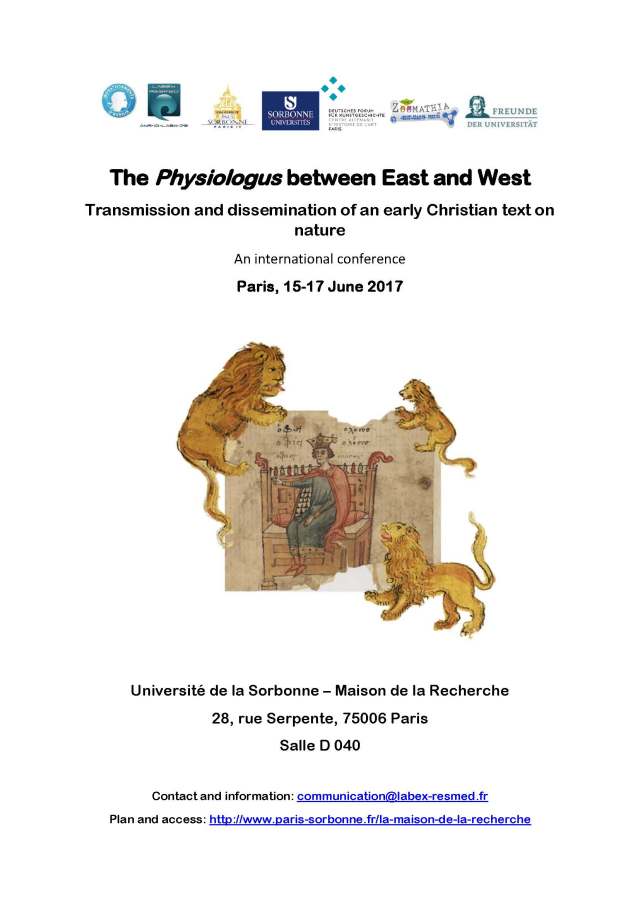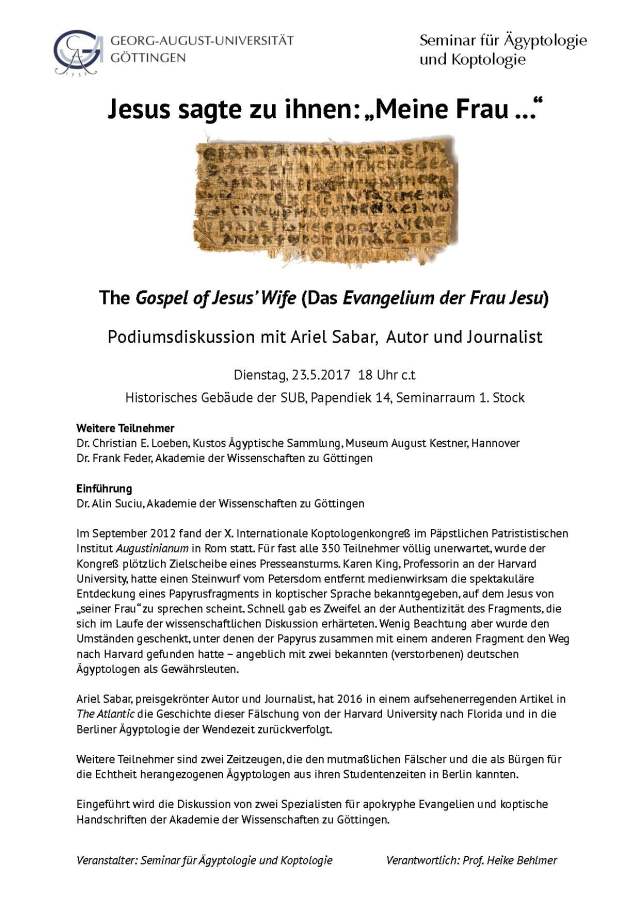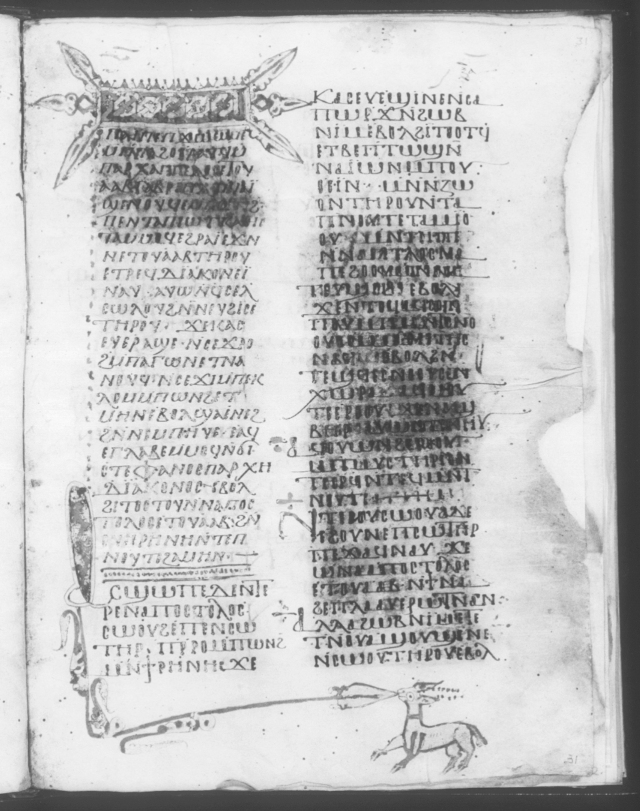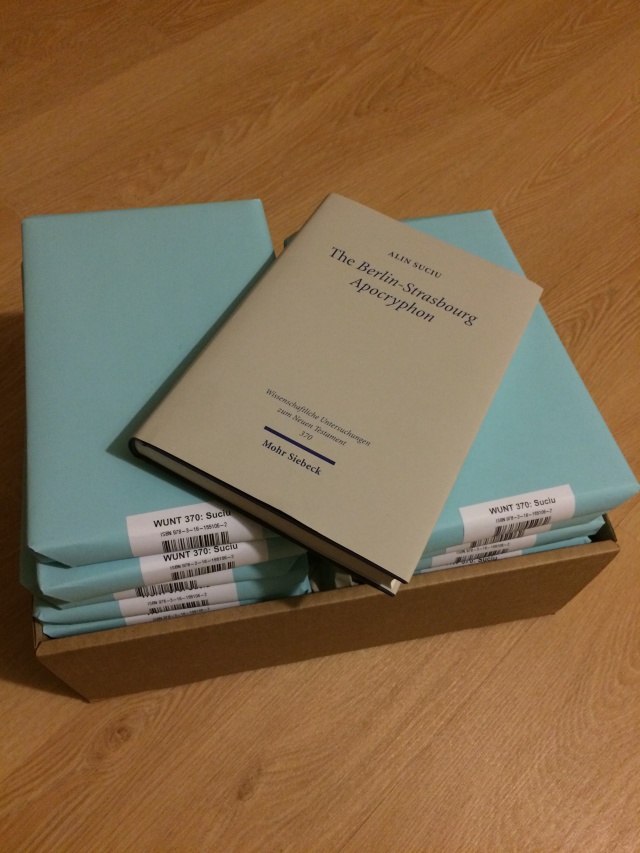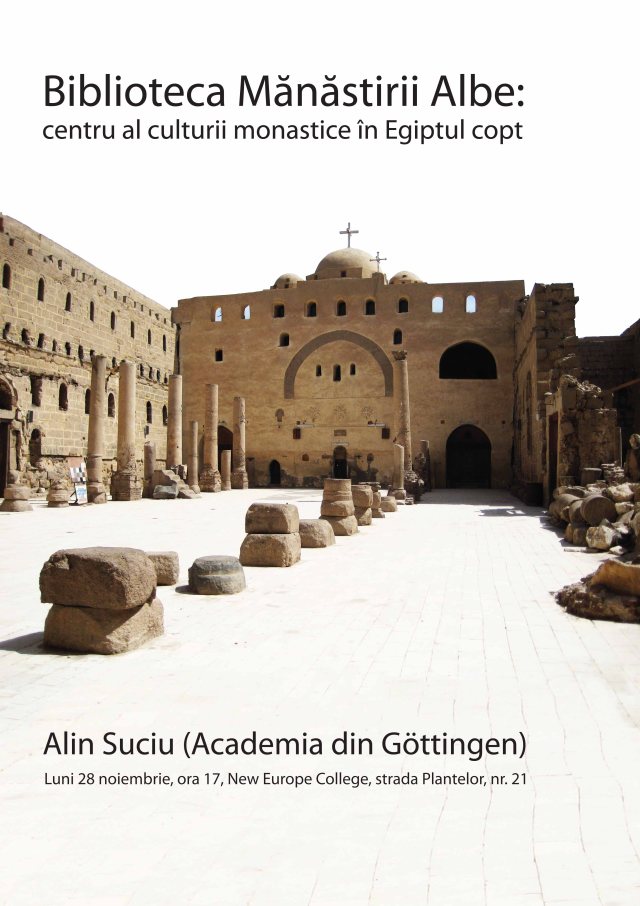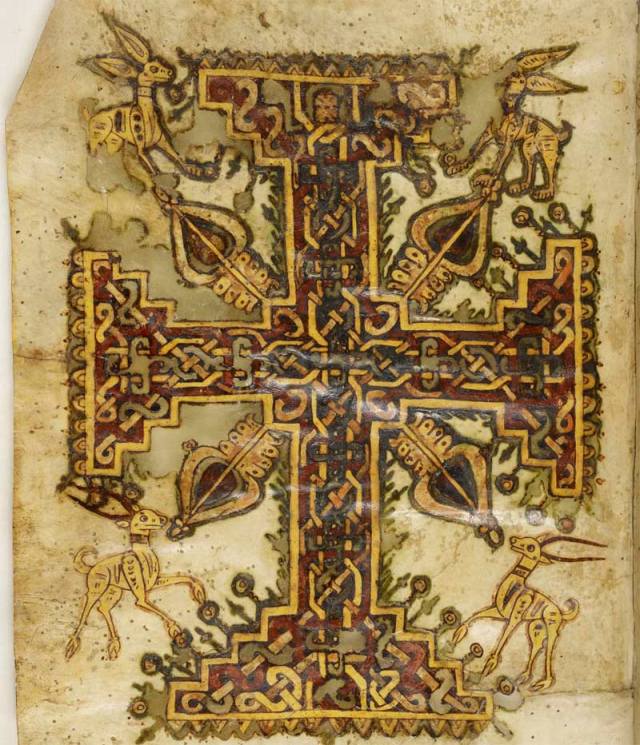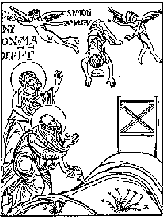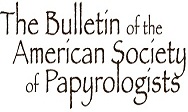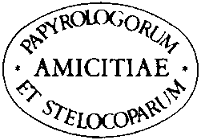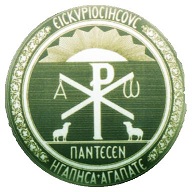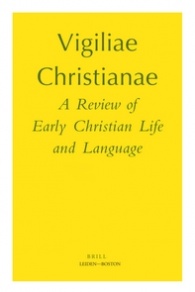From June 22-24, Coptologists from a dozen countries gathered in Brussels for the eighteenth congress of the Association Francophone de Coptologie (French-speaking association of Coptology). Thirty speakers and several additional attendees enjoyed a weekend of stimulating lectures, conviviality, and fellowship.
In accordance with the association’s custom, all the talks were delivered in French. Unsurprisingly, speakers from France and Belgium were well represented. Nonetheless, the conference also benefited from the presence of non-native speakers from countries such as Egypt, Poland, and Russia. Given the importance of English in scientific activities, one may be tempted to expect such a French-speaking event to be attended predominantly by native speakers. In fact, the native speakers only made up slightly more than 50 % of the lecturers.
The conference started in the buildings of the Université libre de Bruxelles, with a few welcome words by Xavier Luffin, President of the Department of Languages and Literatures at the Université Libre de Bruxelles, and Nathalie Bosson, president of the AFC. Mr. Luffin and Mrs. Bosson expressed gratitude towards Alain Delattre and Naïm Vanthieghem, the two main organizers of the conference.
![ULB Bâtiment A[1]](https://suciualin.files.wordpress.com/2017/07/ulb-bacc82timent-a1.jpg)
At the Université libre de Bruxelles: The building in which the AFC conference started (© Wikimedia Commons)
The event comprised eight thematic sessions, namely:
1) Art history
2) Coptic-Arabic studies
3) Epigraphy and papyrology
4) Literature I
5) Palaeography
6) Linguistics
7) Literature II
8) Archaeology and collections
Session 1: Art history (June 22, 10:30-12:10)
Dominique Bénazeth (Louvre) and Cédric Meurice (Louvre), spoke about their project of a catalogue of Coptic sculptures of the Louvre Museum. In a presentation which was both instructive and theatrical – they read aloud original texts of Emile Chassinat, Jean Maspéro, and others, and they made them discuss with each other –, they summarized the history of the Louvre’s collection of Coptic sculptures. This talk ended with a description of the current situation and the speakers’ own project.
Marie Delassus (Louvre) talked about the Louvre’s Rider Ivory (E 10813). After a stylistic description of the artefact, she compared it with similar ivory sculptures conserved in Aachen, Athens, and Baltimore. She highlighted the fact that this ivory had the purpose of emphasizing the imperial power (this tradition persisted until the collapse of the Byzantine Empire). In addition, she compared the ivory sculpture with numerous textiles of the ninth century, which are characterized by similar motives.
Héléna Rochard (École Pratique des Hautes Études), who just defended her dissertation, provided the attendees with a description and a commentary of the preserved iconographical scenes of Bawit. As she explained, the Eucharistic rites are well represented. Miss Rochard gave explanations about the meaning of the representations of the scenes, what they alluded to (e.g. Psalms 71 and 140), and how they had been influenced by apocryphal literature. The liturgical inspiration is more or less represented, depending on the hall. Some areas are linked with the liturgy, but it is not the case for all of them.
Julien Auber de Lapierre (École Pratique des Hautes Études) spoke about Yuhanna al-Armani’s icons of Saint George from the Osmanli era. After starting with an icon whose date is unknown but which was made between 1736 and 1745, he showed fifteen icons made precisely in 1777 (some of them, on which the archangels Michael and Gabriel appear, are reconstitutions from the nineteenth century) and kept in a church of Cairo. He explained in what way Yuhanna al-Armani differentiated himself from the traditional iconography. Unfortunately, Youhanna Nessim Youssef (Catholic University of Australia), who was due to be the second speaker for this talk, was not able to attend.
Session 2: Coptic-Arabic studies (June 22, 13:40-15:20)
The talk of Adel Sidarus (University of Evora) was dedicated to the very end of Coptic literature, in the second half of the fourteenth century. At this time, the usage of Coptic as a literary language, which had disappeared in the eleventh century, apparently came back for a while. A few works were composed in Bohairic Coptic, in a language whose quality is very relative. As for the Sahidic dialect, only one translation is known to have been made. Mr. Sidarus described extensively the lives and the works of Ibn al-‘Amid (d. after 1398/9) and Athanasius of Qus (Upper Egypt, floruit in the second half of the fourteenth century). He also explained that the fourteenth century, apart from seeing the final uprising of Coptic literature, was a turning point which saw a drastic reduction of the Christian population in Egypt, especially in the Nile Delta, because of the increasing pressures on religious minorities.
![Al-Hakim_bi-Amr_Allah[1]](https://suciualin.files.wordpress.com/2017/07/al-hakim_bi-amr_allah1.jpg)
Al-Hakim bi-Amr Allah (© Wikimedia Commons)
Naglaa Hamdi Dabee Boutros (Institut Français d’Archéologie Orientale – Université Catholique de Louvain) spoke about how three Egyptian chronicle writers – Mīḫā’īl, bishop of Tinnīs, Anṭākī, and Maqrīzī – wrote about the Fatimid sultan al-Ḥākim, one of the most controversial figures of Egyptian history. Whereas he ordered the Church of the Resurrection in Jerusalem to be destroyed, forbade women to leave their houses and shoemakers to make shoes for them (in order to ensure that they would stay at home), he is also known as the only sovereign in the history of Islam who officially authorized apostasy. Two episodes of his reign are taken as examples of how the three Egyptian writers could refer to the same event in a very different way.
Perrine Pilette (Fonds National de la Recherche Scientifique – Université Catholique de Louvain) talked about the History of churches and monasteries of Egypt, a historical-topographic work originally written in Coptic but preserved only in two (or three) Arabic manuscripts which were edited, respectively, in 1895 and 1984. It is not sure whether these manuscripts have preserved the same work, or several works which are so similar that they were put together. After checking the page numbers and the other codicological characteristics of the manuscripts (including an unexpected mention of Saladin in a colophon), Miss Pilette cannot give a certain answer to the question of how many manuscripts there were originally. As for the literary genre, she points out that many similar works have been preserved in the Muslim Arabic literature, while there is no equivalent among Christian works written either in Coptic or in Arabic. Therefore, she thinks that his text – which is undoubtedly Christian – could have drawn upon an earlier Muslim work, to which it would have added hagiographic Christian quotes. During the question time, a speaker deemed this hypothesis very bold, but plausible; he was probably not the only one.
Naïm Vanthieghem (Fonds National de la Recherche Scientifique – Université libre de Bruxelles) gave an overview of the documentation from the monastery of Naqlun. The preserved documents include private letters, petitions, receipts, fiscal texts, and juristic documents. This is a rare example of an Arabic documentation from a monastic milieu.
Session 3: Epigraphy and papyrology (June 22, 15:50-18:00)
Maria Mossakowska-Gaubert (University of Copenhagen) talked about the fabrication of textiles in the Egyptian monastic milieu from the fourth century to the seventh century. She was mainly concerned with the materials used for the textiles.
Grzegorz Ochała (University of Warsaw) showed several new graffiti from Deir el-Bahari (Thebes). He gave an overview of the different kinds of graffiti (pagan and Christian, Greek and Coptic, etc.) and explained their respective functions. At the end of his talk, he showed an emotional graffito made by a man who had lost his cat. It seems to be the only Coptic inscription mentioning a misfortune of this kind.
Esther Garel (Österreichische Akademie der Wissenschaften) spoke about titles and functions in Fayyumic documents. As she explains, since the Fayyumic dialect is not yet well known, the titles and the functions may be a good basis for advancing our knowledge of this dialect. In some cases, it is very difficult to distinguish functions from names indicating the origin, since both of them start with the same prefix (ⲣⲙ-, ”man of”). The word ⲗⲉϩⲙⲉϥ is a good example of how difficult the interpretation can be: in many contexts, it seems to apply to a prostitute. However, in some cases, it is about a loaner. Perhaps both functions were associated in the minds of people, or the word whose meaning was “loaner” was used in a euphemistic way to design the world’s oldest profession?
Roxanne Bélanger Sarrazin (University of Ottawa – Université libre de Bruxelles) talked about the calls to Jesus as healer in iatromagical Coptic texts. As in the Greek texts of the same type, the most often quoted text is Mt 4 :23. Other texts are also quoted, especially the letters supposedly exchanged between King Abgar and Jesus; the healing power of those letter was thought to be considerable. Often, canonical and apocryphal texts are used along with each other.
After the talks, a reception took place inside the ULB buildings, in front of the conference room. The attendees stayed for one to three hours, and then each participant was free to choose his own plans.
The second day of the AFC started around 9 am. The seven talks of the morning (sessions 4 and 5) were held inside the buildings of the Université libre de Bruxelles. The five talks of the afternoon (sessions 6 and 7) took place at the Royal Academy of Belgium.
![Academy palace[1]](https://suciualin.files.wordpress.com/2017/07/academy-palace1.jpg)
The Academy Palace, near the Coudenberg (© Wikimedia Commons)
Session 4: Literature I (June 23, 9:00-10:20)
Firstly, Nathalie Bosson (University of Genève) and Sydney Aufrère (Centre National de la Recherche Scientifique) examined Shenoute’s polemical writings against the Jews. In Shenoute’s texts, the Jews are associated with all the other enemies of the Church, such as the pagans and the heretics. However, Shenoute goes on with words that are specifically aimed at the Jews, who are depicted as the ones who crucified the Christ. His text, whose primary function was to educate the monks, is strongly anti-Jewish, although much harsher can be found in the early Christian literature. After the presentation, I asked Nathalie Bosson whether the biblical quotes used by Shenoute in these polemical writings were accurate, or whether Shenoute had changed a few words in order to ensure that these modified quotations would suit him better for his purpose. She explained to me that Shenoute’s quotations were in fact very accurate, but that he provided interpretations after quoting the Bible; for instance, after quoting very accurately a passage in which the word “Jerusalem” appears, the archimandrite explains that “Jerusalem” must be understood as “the Jews.” Of course, as Wolf-Peter Funk noticed, one has to be careful when debating Shenoute’s accuracy: since the preserved manuscripts of the White monastery date back from much later that Shenoute’s life, the “accuracy” may also be the result of later corrections made by copyists who transmitted Shenoute’s works.
Jacques van der Vliet (Universities of Leiden and Nijmegen) spoke about the new edition of the Coptic text of the Apocalypse of Paul, which is currently in preparation. He came back over the text’s discovery, the earlier editions, and the two main manuscripts. One of them is a manuscript from London which lacks the first fifteen chapters (the “prologue of Tarsus”) but contains thirteen additional chapters at the end; all of them are unknown not only in the other Coptic manuscript, but also in every single manuscript of the Latin tradition, in which the text has no satisfying ending. In the Syriac version, the redactor created an epilogue using sentences of the prologue. Therefore, it may be that all the versions, except the one of the London manuscript, are derived from one mutilated manuscript.
Eugenia Smagina (Russian Academy of Sciences) talked about the description of the twelve precious stones in the Encomium to the saints Peter and Paul, preserved in a codex of the monastery of Hamuli. The text contains a comparison of the twelve apostles with the twelve precious stones of the Bible, listed in the book of Exodus (Ex 28:17-20, 39:10-14) and mentioned by several Christian authors such as Meliton of Sardis and Tertullian. According to Mrs. Smagina, some of their properties are linked to their etymology in the Hebrew text of the Bible, but most of them have parallels in the work of Theophrastus, or of Theophrastus’ sources, or of the authors who draw upon Theophrastus.
Session 5: Palaeography and codicology (10:50-12:30)
Chantal Heurtel (Paris) made a comparison between the ostraca Frange wrote in his early years and those he wrote at the end of his life, in order to understand the evolution of his hand. Among others, she showed the numerous variants of Frange’s own name. Sometimes, several of them can be found in the same document.
Loreleï Vanderheyden (Collège de France) presented an online tutorial for learning Coptic palaeography. Available for free on the EPHE’s website (http://humanum.ephe.fr/ephe-palaeography-tutorial/fr), it provides the apprentice with reading exercises, in an order of increasing difficulty. It is quite difficult to find texts which can be put online, since they must be copyright-free, without lacunae, and without abbreviations. Until now, three texts from the sixth and seven centuries have been put online, but we can hope that many more will be available in the next years; it would also be interesting to add texts which date from earlier or later periods. The tutorial, which was used in front of the public, is very user-friendly.
Nathan Carlig (University La Sapienza, Rome) showed the public the very few literary Coptic rolls that he identified after checking the lists and examining the texts. There are only ten of them. Mr. Carlig described them one after another and draws conclusion on the basis of their characteristics. To summarize, it seems that the rolls were only used in two particular cases: for very elegant copies, to which the format gave the prestige of archaism, and for cheap personal copies, which were a re-usage of earlier document. Clearly, the codex is the predominant format of this time, and the roll has almost disappeared.
Catherine Louis (Centre National de la Recherche Scientifique) talked about Coptic manuscripts whose pagination system deviated from the norm. Her research was limited to the manuscripts of Hamuli and the White Monastery. She found a few manuscripts that were paginated only on the verso (e.g. M. 592). As far as the codices of the White Monastery are concerned, the codex MONB.YQ is paginated on only one side. There are also codices which are not paginated at all: MONB.AV (Varia) and MONB.GN (Canon 7).
Session 6: Linguistics (15:00-16:20)
Wolf-Peter Funk (Université Laval) spoke about the variation of literary Coptic in texts from Middle Egypt. First, he summarizes what we know about the particularities of the Coptic dialects of this area, namely, the Fayyumic and the Mesokemic; he enumerated five criteria which enable us to distinguish the texts belonging to one of those dialects. Then, he comes back over two texts from Middle Egypt, Mich. 3520 and Mich. 3521, which have characteristics of both Fayyumic and Mesokemic (the first one could be described as “Fayyumic with some influence of Mesokemic”, and the second one as “Mesokemic with some influence of Fayyumic”). Finally, he mentions six fragments which are situated somewhere between Fayyumic and Mesokemic but in which it is not possible to see clear tendencies.
Korshi Dosoo (Labex Resmed) talked about the terminology of peace in Coptic. His research centre, Labex Resmed, has a project of investigating the words related to peace in the languages of the Mediterranean world (Les Mots de la Paix: http://www.islam-medieval.cnrs.fr/MotsDeLaPaix/index.php/en/projects/textual-analysis/the-coptic-terminology-of-peace), and Mr. Dosoo is working on the Coptic language. In older forms of Egyptian, the principal word for “peace” was ḥtp, which was linked to the ideology of ma’at – cosmic and national order and justice. The cognate Coptic term, ϩⲱⲧⲡ, did not retain these associations, but simply refers to “reconciliation”. The Greek word εἱρήνη was borrowed into Coptic, where it is not solely associated with the idea of “peace” (i.e. the absence of war), but may express the idea of interpersonal harmony and wellbeing. Mr. Dosoo also mentioned expressions such as ϩⲛ ⲟⲩⲉⲓⲣⲏⲛⲏ, which was so common that in one passage of Proverbs it was used to replace the Greek ἐπ ἔλπιδι, as well as the Coptic equivalent for “May peace be with you,” which does not appear in documentary texts before the Arabic conquest. Mr. Dosoo ended his talk with a discussion of the word ⲙⲧⲟⲛ, used to express the idea of rest, physical health, and peace of mind.
Session 7: Literature II (16:50-18:15)
The speech of Jitse Dijkstra (University of Ottawa) was about the Life of Aaron, a hagiographic work about the lives of ascetics who lived near the southern border of Egypt in the fourth and fifth centuries. The text was written in the sixth century and edited by Wallis Budge. Mr. Dijkstra explained how the author, by using quotations and references to earlier Coptic works, shows the reader his knowledge of Coptic literature and his ability to interact with it. The Bible is often quoted, especially the Old Testament (three times more often than the New Testament). That said, Mr. Dijkstra also mentions other texts which could have inspired the author of the Life of Aaron. It is clear that the author had a profound knowledge of Coptic literature, although, since the date of many works is unknown, it is very difficult to say who was influenced by whom.
The day ended with the talks of Anton Voytenko (Russian Academy of Sciences) and Albert Ten Kate (Leiden). Mr. Voytenko spoke about the homily of Pisenthios, bishop of Coptos, in honour of Onophrios the Great. Mr. Ten Kate compared several versions of Psalm 151 in the manuscript Barb. Or. 2, which contains this text in five languages of Eastern Christianity (Bohairic Coptic, Armenian, Arabic, Ethiopic, and Syriac).
Then, the participants had a guided tour of the town centre. They were led by Alain Martin (Université libre de Bruxelles), who showed them the Coudenberg, the Mount of Arts, and the Grand Place with the City Hall. At the end of the day, the participants gathered for a superb dinner in a restaurant of the Grand Place.
On the third day, the speakers met around 10:20 in the Royal Museums of Art and History.
![Hall of Antiquities[1]](https://suciualin.files.wordpress.com/2017/07/hall-of-antiquities1.jpg)
Inside the Royal Museums of Art and History: The Hall of Antiquities (© Wikimedia Commons)
The first speech, by Jean-Luc Fournet (Collège de France) and Dominique Bénazeth (Louvre), was about spoons from Christian Egypt on which inscriptions were written. Some of the inscriptions are invocations to the apostles, others are calls to rejoice. All of them are written in Greek, which is not surprising, Mr. Fournet explained, given the sociolinguistic context: before the Arabic conquest, Greek is still the juristic and administrative language, while Coptic is only used for private exchanges.
Gertrud van Loon (Katholieke Universiteit Leuven) came back over the excavations of Jean Clédat at the cemetery of Deir Anba Hadra. In 1903, Jean Clédat received the authorization to examine the paintings and the inscriptions at Deir Anba Hadra. In 2015, Mrs. van Loon’s team started to consult Jean Clédat’s diaries, which enable them to see what he had done; he excavated seven tombs, but it is not possible to know which these tombs are.
Finally, Emmanuel Serdiuk (Université libre de Bruxelles) proposed to identify an era of the Ramesseum as a former pigeon loft. He proposed several reconstitutions, which were showed in his PowerPoint presentations, and he gave anthropological explanations for the choice of such a place for a pigeon loft.
After the last talks, the AFC’s general assembly took place in the same room. The president, Mrs. Bosson, announced that three new members had joined the association: Korshi Dosoo, Eugenia Smagina, and myself. Several proposals were made regarding the place where the next conference could take place. Then, we had a lunch in the museum’s restaurant, not far from the meeting room.
After the lunch, most participants remained in the museum for a visit of the Egyptian collections. Our guide was Dorian Vanhulle, who recently completed his PhD at the Université libre de Bruxelles. Luc Delvaux, curator for the museums’ Egyptian collections, even made available a few artefacts which the public cannot see under normal circumstances.
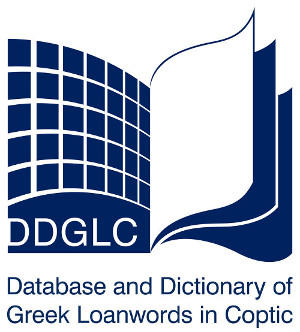


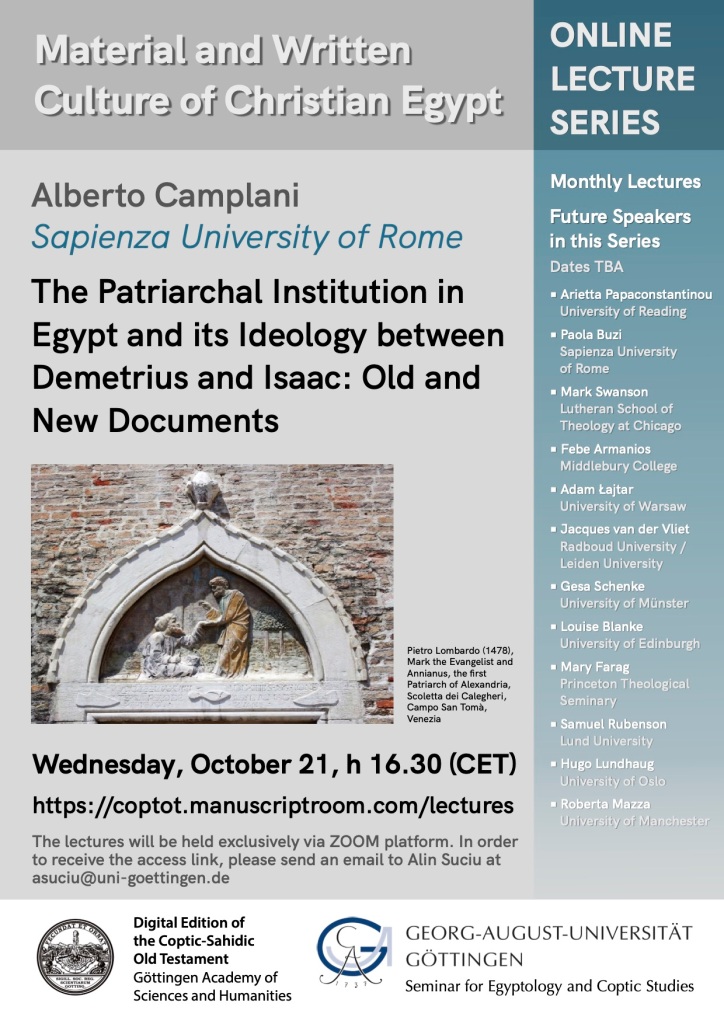
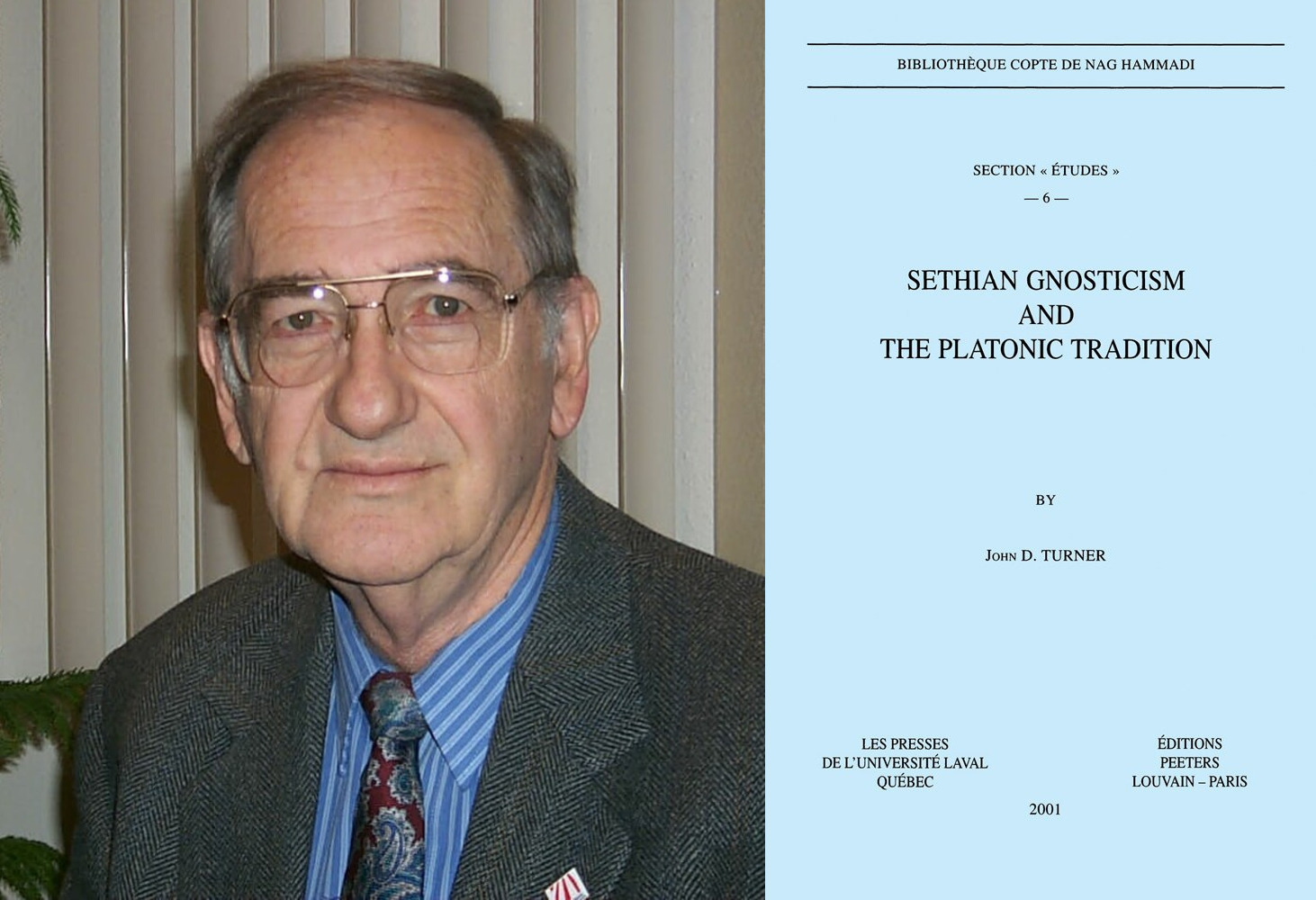
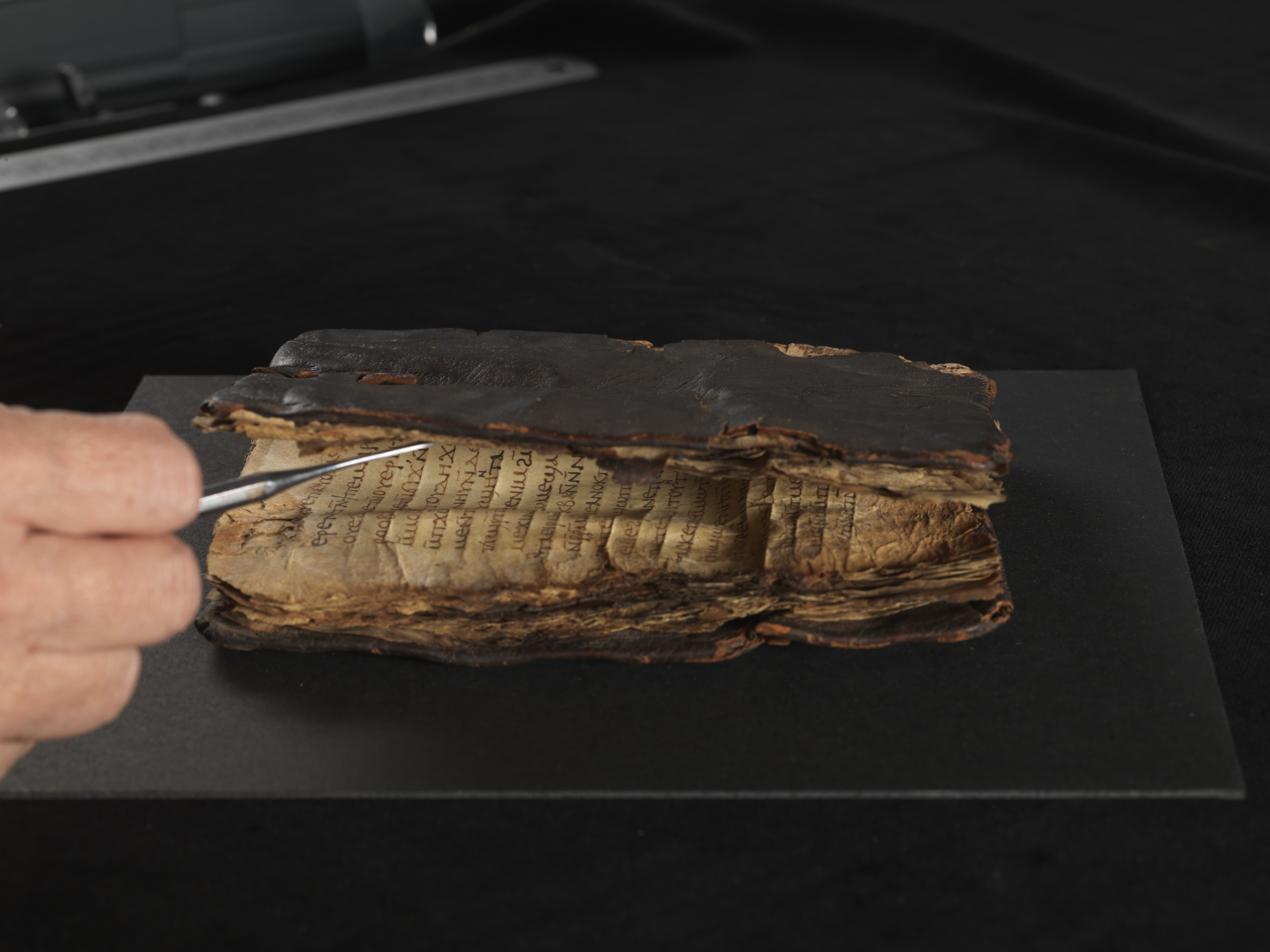
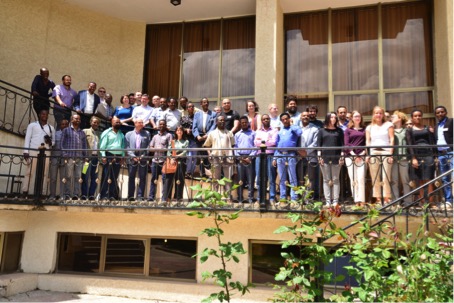
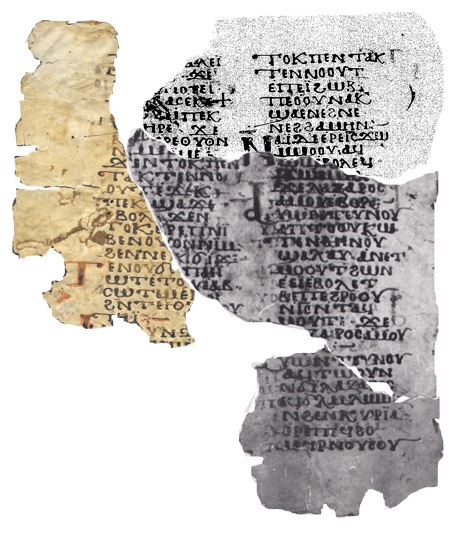


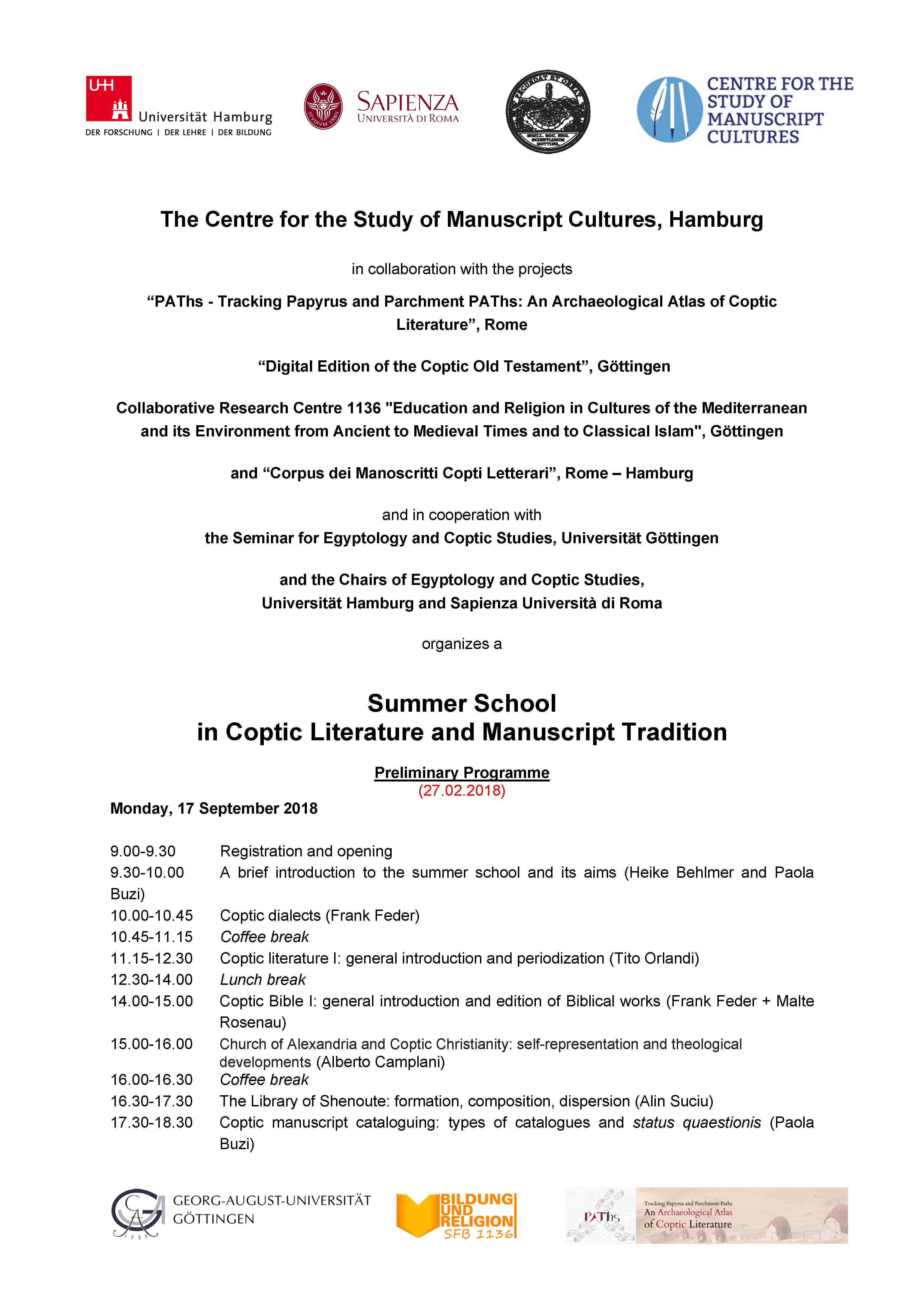
![ULB Bâtiment A[1]](https://suciualin.files.wordpress.com/2017/07/ulb-bacc82timent-a1.jpg)
![Al-Hakim_bi-Amr_Allah[1]](https://suciualin.files.wordpress.com/2017/07/al-hakim_bi-amr_allah1.jpg)
![Academy palace[1]](https://suciualin.files.wordpress.com/2017/07/academy-palace1.jpg)
![Hall of Antiquities[1]](https://suciualin.files.wordpress.com/2017/07/hall-of-antiquities1.jpg)
